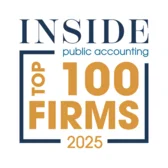The federal Qualified Opportunity Zone (QOZ/OZ) program, originally enacted under the 2017 Tax Cuts and Jobs Act, offers a flexible tax savings and diversification tool for taxpayers generating large capital gains. The program was extended under the One Big Beautiful Bill (OBBB), officially concluding OZ 1.0 on December 31, 2026 (but retaining OZ 1.0 census tracts through December 31, 2028) and launching OZ 2.0 with renewed focus and updated provisions. The goal of the program remains to spur investments in low-income areas to promote business growth and economic revitalization, providing social, community, and individual benefits. Individuals, C and S Corporations, REITs, partnerships, and other pass-through entities can sell appreciated capital assets and elect to reinvest the resulting capital gain into a Qualified Opportunity Fund (QOF).
To participate in the QOZ program, the taxpayer must generally roll all or a portion of their capital gain into a QOF within 180 days of the recognition date of the gain. K-1-reported capital gains have much longer reinvestment options. Virtually any short-term or long-term gain can be invested into an OZ Fund (e.g. real estate gains, including IRC Section 1250 recapture, stock portfolio gains, business sales, intangible sales, bitcoin, artwork and other collectibles. The QOF must then timely invest the deferred gains into undeveloped or developed real estate, a new or existing QOZ-based business, or other qualified QOZ property.
How it Works:
A taxpayer investing $1,000,000 of deferred tax gain into a QOF on June 30, 2027, will start with a $0 tax basis in the QOF since the gain has not been recognized. On June 30, 2032, the deferred gain of $1,000,000 will receive a basis step-up of 10% (30% if rural). The deferred gain of $900,000 ($1,000,000 net of 10% basis step-up) or $700,000 if rural ($1,000,000 net of 30% basis step-up) will also be includable on the taxpayer’s 2032 tax return, and their QOF tax basis will then be the full $1,000,000 QOF investment, adjusted for any interim tax losses in the QOF and QOZB.
Once the investor has held the QOF investment for at least ten years, the tax basis in the QOF will adjust to reflect fair market value, and the taxpayer may elect to exclude all post-investment federal tax gains upon disposition. Under OZ 2.0, this elective exclusion is available for up to 30 years from the QOF investment date, allowing for decades of potential tax-free appreciation.
Note that California, Massachusetts, Mississippi, North Carolina, and Washington have not adopted the federal OZ rules, but taxpayers can still make OZ investments in those states and receive federal benefits. New York, Hawaii, Arkansas, and Alabama also require investments into their states in order to benefit under the program.
Click here to view the Opportunity Zones Map.
Click here to request our Opportunity Zone Investment - Critical Path Guide.
To request your copy of Investor's Guide to Opportunity Zones, please complete the following form. The guide will be available Spring of 2025, and completion of this form will ensure you are one of the first to receive the PDF!


